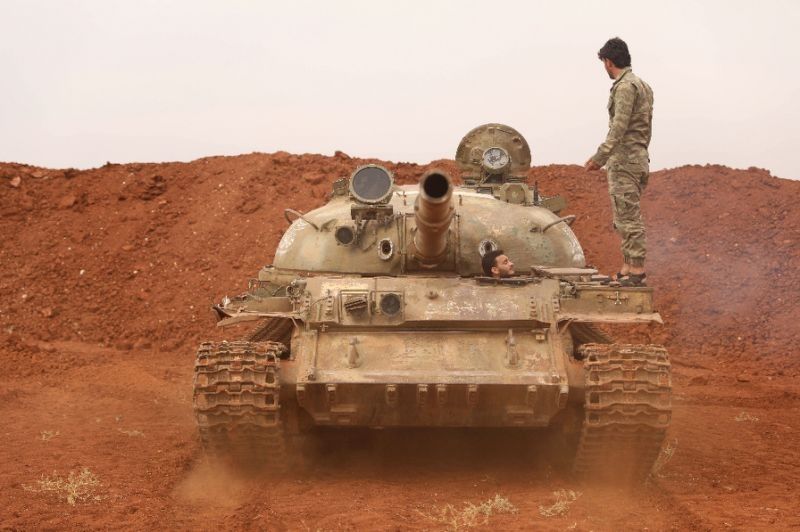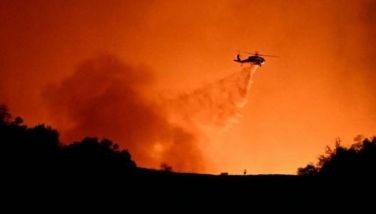Most heavy arms pulled out of planned Syria buffer zone

Beirut - Jihadists and Turkish-backed rebels in Syria's last major opposition stronghold have withdrawn heavy weapons from nearly all of a planned buffer zone, a monitor said yesterday, a day ahead of deadline.
The pullback is the first major test of a deal brokered by government ally Russia and Turkey last month to avoid what the United Nations warned would be the appalling humanitarian consequences of a major government offensive.
Under the agreement, all factions have until Wednesday to withdraw heavy weaponry from the 15- to 20-kilometre (nine- to 12-mile) wide buffer zone, which rings Idlib province and adjacent areas of the northwest.
And by Monday, the buffer zone must be free of all jihadists, including those of the region's dominant armed group, the Hayat Tahrir al-Sham (HTS) alliance led by Al-Qaeda's former Syria branch.
Analysts had expected Ankara to have a difficult time enforcing the September 17 deal but by yesterday, the Syrian Observatory for Human Rights said the heavy weapons pullout was nearly complete.
"Rebel and jihadist factions have withdrawn their heavy arms from most positions inside the planned buffer zone except for the northern Latakia countryside," the head of the Britain-based monitor said.
"We did not observe any movement of heavy weapons outside that area. They could have been moved to trenches or secret locations," Rami Abdel Rahman told AFP.
The Idlib region consists of a large part of the province of the same name, as well as adjacent rebel or jihadist-held areas of the Latakia, Hama and Aleppo provinces.
- Tanks and artillery guns -
On yesterday, an AFP correspondent saw tanks and artillery guns that pro-Ankara rebels had withdrawn from the buffer zone some 20 kilometres (12 miles) away.
They moved the armoured vehicles into pits surrounded by mounds of earth, and wrapped up artillery guns for protection.
HTS and smaller jihadist factions quietly began withdrawing their heavy arms on Saturday in an operation that continued through Monday night, the Observatory said.
The pro-Ankara National Liberation Front said it had completed its weapons pullback on Monday.
HTS, which controls more than two-thirds of the buffer zone around Idlib along with other jihadists, has not given any formal response to the September 17 truce deal.
But by beginning to pull out its weapons, the group was "de facto" implementing it, Abdel Rahman said.
"No faction, rebel or jihadist, would be able to withstand the consequences of any escalation if the deal's terms were not met," Abdel Rahman said.
A source close to HTS told AFP it had come under pressure to fall in line to avoid further hardship for the rebel zone's three million residents, many of whom have fled previous bloody government offensives on other parts of Syria.
"Everybody has been forced to agree to the initiative, though reluctantly, so that people can enjoy a bit of security and safety after long years of suffering," the source said.
- Jihadists withdrawal? -
The source said HTS was satisfied that the presence of the Turkish troops, whose numbers have increased in recent weeks, would prevent any Russian-backed government offensive.
Under the terms of the deal, the buffer zone is to be patrolled by Turkish troops and Russian military police.
But rebels objected to the Russian presence in the zone, and said they received guarantees from Turkey that Russian patrols had been dropped.
For the zone to come into effect, "radical groups" -- interpreted as meaning HTS and other jihadists -- must also leave the area by next Monday.
It is still unclear whether the jihadists will comply with this second deadline.
Nawar Oliver, an analyst from the Turkey-based Omran Centre for Strategic Studies, said he thought HTS would comply with the deal even if it did not publicly announce its support.
"It'll still have a presence in Idlib and is not handing over any weapons or fighters, but is handing over the (buffer) zone to a neutral side, Turkey, and to the NLF," he told AFP.
Forces loyal to President Bashar al-Assad have retaken swathes of territory in Syria since Russia intervened in September 2015.
A series of offensives this year saw a succession of longtime rebel strongholds surrender. A similar Russia-backed assault had been expected against Idlib before the deal was announced last month.
Despite progress in implementing the accord, Assad insisted on Sunday it was a "temporary measure" and Idlib would eventually return to state control.
The Syrian war has killed more than 360,000 people since it erupted in 2011 with the brutal repression of anti-government protests.
- Latest
- Trending

































